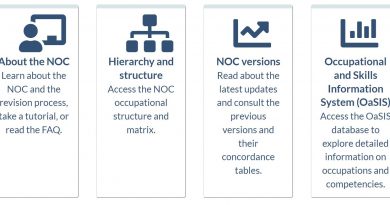Standard personal information banks
Consistent Uses: The information in these records will be used for administrative and statistical purposes associated with the establishment of a day care centre. It will also be used for the evaluation and monitoring of the federal public service workplace day care policy. The information may be disclosed to Treasury Board, the government institution, an authorized committee of the government institution, a custodian government institution and the Board of Directors of the Day Care Centre. Together with the linked information from the files identified below, this information will form the basis for tabulations of the extent and type of employee day care users.
Retention and Disposal Standards: For information about the length of time that specific types of common administrative records are maintained by a government institution, including the final disposition of those records, please contact the institution’s Access to Information and Privacy Coordinator.
RDA Number: 98/005
Related Record Number: PRN 949
Bank Number: PSE 930
Top of Page
Categories of Personal Information
The Description section in a personal information bank (PIB) describes the personal information in the records to which the bank relates. Treasury Board Secretariat has established the following categories of personal information, which give examples of specific elements of personal information that fall under each category. The purpose of the categories is to reduce the number of personal information elements that need to be listed in the Description section. These categories are representative of the personal information collected by most institutions, and they now appear in many of the registered PIBs.
Biographical information (e.g. work history, curriculum vitae, family information, hobbies, interests, etc.)
Biometric information (e.g. blood type, eye or facial scan, DNA, finger / hand prints, etc.)
Contact information (e.g. work and / or home information, including postal and e-mail addresses, telephone, fax, cell phone numbers, etc.)
Citizenship status (e.g. citizen, landed immigrant, etc.)
Credit card information
Credit history (e.g. credit reports / scores, liens, bankruptcies, third-party collections, etc.)
Criminal checks / history (e.g. information related to criminal record checks, investigations, charges, conviction dates and locations, pardons, etc.)
Date of birth
Date of death
Employee identification number (e.g. Personal Record Identifier, RCMP regimental number, Canadian Forces service number, etc.)
Employment equity information (i.e. information about aboriginal peoples, members of visible minorities, persons with disabilities, and women)
Employee personnel information (e.g. records of attendance and leave, notices of disciplinary action, alternative work arrangements, decisions concerning compensation and fitness for work, official languages qualifications, salary, deductions, level of security clearance, performance reviews and appraisals, rating board assessments, including evaluation notes from staffing boards, training and development course applications and evaluations, etc.)
Financial information (e.g. income, investments, mortgages, loans, orders of garnishment, financial institution information for direct deposit and other banking purposes, including name and branch number of institution, account number(s) and name(s) on accounts, etc.)
Gender
Language (e.g. mother tongue, official and other languages, etc.)
Medical information (e.g. psychological assessments, physical disabilities, blood type, medical conditions, etc.)
Name (e.g. last name (surname/family name), given names (first, second or more), maiden name, nicknames, aliases, etc.)
Opinion or views of, or about, individuals
Other identification numbers (e.g. fishing license, driver’s license, etc.)
Photos
Physical attributes (e.g. height, weight, colour of hair and eyes, physical markings (scars, tattoos, body piercing), etc.)
Place of birth
Place of death
Signature
Social Insurance Number (SIN)





